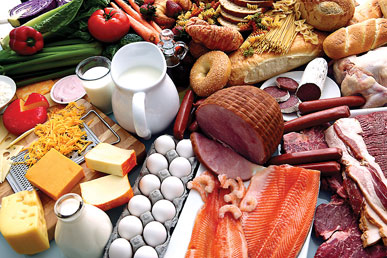A basic and essential component of our food delivery system is the distribution of ingredients and products. This is why it is vitally important for food distributors and companies to know their suppliers and understand the food protection measures being used.
There are three food categories that are considered to be especially vulnerable to contamination. Meat or dairy products, which are highly perishable, must be monitored closely because of their relatively short shelf lives. The second category includes produce and nuts, which can originate from multiple suppliers and then mixed and packaged multiple times, which requires extensive human interaction with the product. And third, secondary ingredients such as peanut butter, seasonings, and breadings are also highly susceptible to contamination.
The Food and Drug Administration’s Center for Food Safety and Applied Nutrition (CFSAN) has introduced several initiatives designed to help suppliers, distributors, and operators with food defenses. Those initiatives are ALERT (targeting food service managers), FIRST (aimed at employees, the first line of defense), and CARVER+Shock, a comprehensive online planning tool to help companies set food defense priorities. Information about all of them can be downloaded from the CFSAN website.
Both food defense and food safety are included in successful food protection programs. The Food Safety Modernization Act (FSMA)
The FDA’s recent Food Safety Modernization Act (FSMA) is the most extensive reform of U.S. food safety laws in 70+ years. Its objective is to assure the safety of food throughout the supply chain through the introduction of new requirements to food manufacturers, processors, transporters, and distributors. The FSMA legislation consists of seven new regulations. The key regulation around food transportation is the Sanitary Transportation of Human and Animal Food (sometimes referred to as SFTA — the Sanitary Food Transport Act), which includes the following requirements:
- Temperature control/tracking: For refrigerated products, every storage compartment must be pre-cooled and have a temperature monitoring device. Shippers must also define temperature conditions that must be met throughout transportation.
- Cleanliness: Vehicles must be maintained in a sanitary condition, and are subject to inspection. Loading/unloading stations must be provided with hand-washing facilities.
- Temperature certification/data exchange: A log of temperature conditions for the duration of the transportation must be provided to the receiver/shipper by the carrier upon request.
- Training: Carriers must provide basic sanitary transportation practice training to their personnel.
- Data retention: All data records must be maintained for a period of 12 months.
The government is introducing rules to assure the safety of food throughout the supply chain with the STHAF. Sanitary Transport of Human and Animal Food (STHAF)
Any food transportation company with revenues over $500,000 that operates as a shipper, carrier, or receiver must comply with the Sanitary Transport of Human and Animal Food (STHAF) rules, as follows:
- A shipper is a person who initiates a shipment of food by motor or rail vehicle. Shippers are frequently the manufacturers or processors of food. They are responsible for supply chain functions initiated by a shipper even if they are performed by another person, such as a person who only holds food and physically transfers it onto a vehicle arranged for by the shipper.
- A carrier is a person who owns, leases, or is otherwise ultimately responsible for the use of a motor vehicle or rail vehicle to transport food. The carrier is responsible for all functions assigned to a carrier even if they are performed by other people such as a driver.
- A receiver is any person who receives food after transportation, whether or not that person represents the final point of receipt for the food. A receiver does not include an individual consumer or others who are not in the business of distributing food.
With the proposed Sanitary Transport of Human and Animal Food act (STHAF), the U.S. government is introducing new rules and regulations to assure the safety of food throughout the supply chain. These directives will create new requirements for food manufacturers, processors, transporters, and distributors that must be followed. Besides the obvious benefits of compliance to customers and consumers, shippers and carriers who do not comply can be subject to a wide range of penalties.
The final rules for the Sanitary Transport of Human and Animal Food (STHAF) were published on April 16, 2016. There will be a 12-month adoption period with the final rules expected to become effective as of March 31, 2017.
